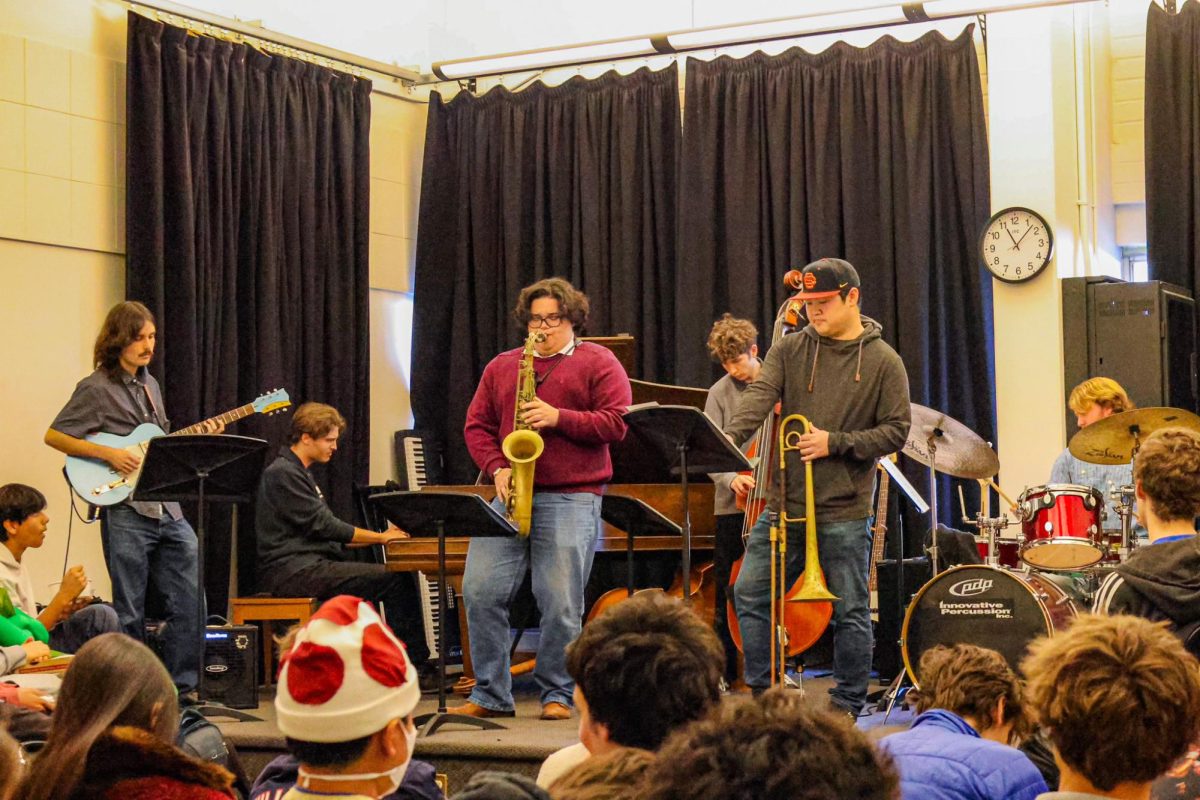By Ester Khachatryan
The intersection warning signs flash “Walk” and a pedestrian going home from work crosses the street. As he comes closer to the opposite sidewalk, he notices a cameraman pointing a camera toward the sky. The pedestrian fixes his eyes in the direction the camera is pointing. A casually dressed woman, employing no harness and “holding on to dear life” is clasped atop a pole.
The woman on top of the pole was video art teacher Nancy Popp, who has exhibited “Untitled (Street Performances)” at Chapman University through Oct. 4. The exhibition is part of a video exchange involving artists from Los Angeles and Düsseldorf. Poppâs video art of her performance was exhibited in Düsseldorf, Germany in June. Poppâs video and photo images featured in the exhibition depict the action of climbing a street pole in areas designated as public spaces.
“In our society, the commons are disappearing. More and more public spaces are limited by private ownership and big business,” Popp said.
The commons, dating back to circa 1600âs colonial America, were areas designated for public use. Free market capitalism and corporatism have privatized America and have decreased public spaces, Popp said.
Concerned about this development, Popp said that she expressed her discontent through art. Although climbing a street pole implies protest, Popp said that it is an unclassifiable action that takes a side view of the two opposing arguments regarding the loss of public space.
“The displacement of the body in an urban environment pinpoints and critiques the hierarchies and the boundaries of restricted public space,” Popp said.
Popp chose recognizable streets in the cities she visited including Los Angeles, San Francisco and Düsseldorf to do her performances.
Although Popp was not breaking the law by climbing poles located in public spaces, she said that her cameraman is frequently harassed by law enforcement.
Through her art, Popp references the idea of Axis Mundi, which symbolizes universality of all cultures and similarity of central ideas within these cultures.
Performing in different cities, Popp said, reinforces the idea of similar centers within each culture.
As time goes by, Popp said, it will be interesting to see if such similar centers within cultures become touchstones that elicit responses that strike similar chords in diverse peoples throughout the globe and more common ground is covered to the benefit of societies at large.




























